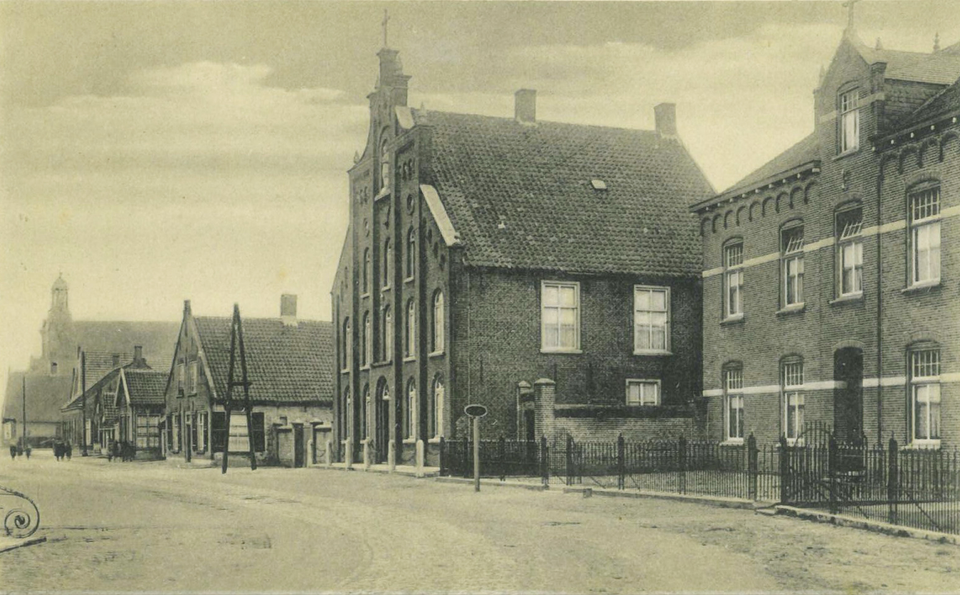Attention stone - Charity St. Francis de Sales
Charity Franciscus de Sales (1858-1957)
More than 250 of these special tiles have since been placed in the Netherlands, Belgium and Germany. Steven Woudstra from Schijndel devised the 'attention stone'. The purpose of these attention stones is to give visitors a moment to reflect on (lost) heritage. A QR code on the stone links visitors to this website. The stones are part of a bicycle and walking route called 'On the road in the historic Langstraat'. Four of the 24 tiles are located in Waspik.
Daniel Sporenberg pastor at Waspik (1832-1843) had given the idea...
Charity Franciscus de Sales (1858-1957)
More than 250 of these special tiles have since been placed in the Netherlands, Belgium and Germany. Steven Woudstra from Schijndel devised the 'attention stone'. The purpose of these attention stones is to give visitors a moment to reflect on (lost) heritage. A QR code on the stone links visitors to this website. The stones are part of a bicycle and walking route called 'On the road in the historic Langstraat'. Four of the 24 tiles are located in Waspik.
Daniel Sporenberg pastor in Waspik (1832-1843) had put forward the idea of establishing a Charitable Institution for the purpose of providing Catholic education, including for children of the underprivileged. Pastor Sporenberg, building pastor of St. Bartholomew's Church, had purchased a house for this purpose, which was originally intended to be a rectory. It could house some sisters. The purchased house turned out to be unsuitable to serve as a Charitable Institution, and the plan to establish a convent here was abandoned entirely and the house was sold.
The need for Catholic education in Waspik remained, but to meet that need proved to be a major, especially financial, problem. The city council refused to give an allowance for the education of the poor. Pastor A. van lersel came to the rescue, providing a large sum from his own capital and Miss A. Schoenmakers also made a financial commitment.In 1857 the congregation Jesus Maria Jozef (J.M.J.) finally bought the property, which was owned by the farmer and mayor Frans Kamp. They converted the large farmhouse into a convent and built an impressive facade in front of it, making it look like a convent. On March 8, 1858, eight Sisters of J.M.J. left Engelen to begin their work in Waspik in the house that was named "Love Institution Franciscus van Sales. A start could be made with teaching Waspik girls.
Girls' School
In 1880, it was decided that a new girls' school would be built west of the convent. On July 10, 1880, the first stone was laid by Pastor Van Iersel. Later, the school was expanded with some classrooms where education was given to girls aged 12 to 14, the Voortgezet Lager Onderwijs (VGLO), similar to the later housekeeping school. The building retained its educational function until the early 1960s. The loveseat also partially served as a hospice for the elderly and needy. In 1890, forty people resided in the guest house; an untenable situation in the too limited space. The complex was expanded with a house next to the convent and in 1922 with a new building between the old convent and the girls' school.
After about 25 years, the existing home for the elderly was no longer adequate and the new Sint Jozef House, later the Riethorst, was built. That house, too, eventually no longer met the requirements of the time and was replaced in 2012 by the current care center under the name "De Stroming.
The sisters of J.M.J. left Waspik in 1956. Pastor Roovers found the 'Daughters of Our Lady of the Sacred Heart' from Tilburg willing to take over both the boarding house for the elderly, and the education. After a short time they too withdrew and their place was taken by non-religious people. In 1957 the convent and adjacent buildings were demolished for the construction of the new home for the elderly, Sint Jozef, which was inaugurated on May 28, 1959.
